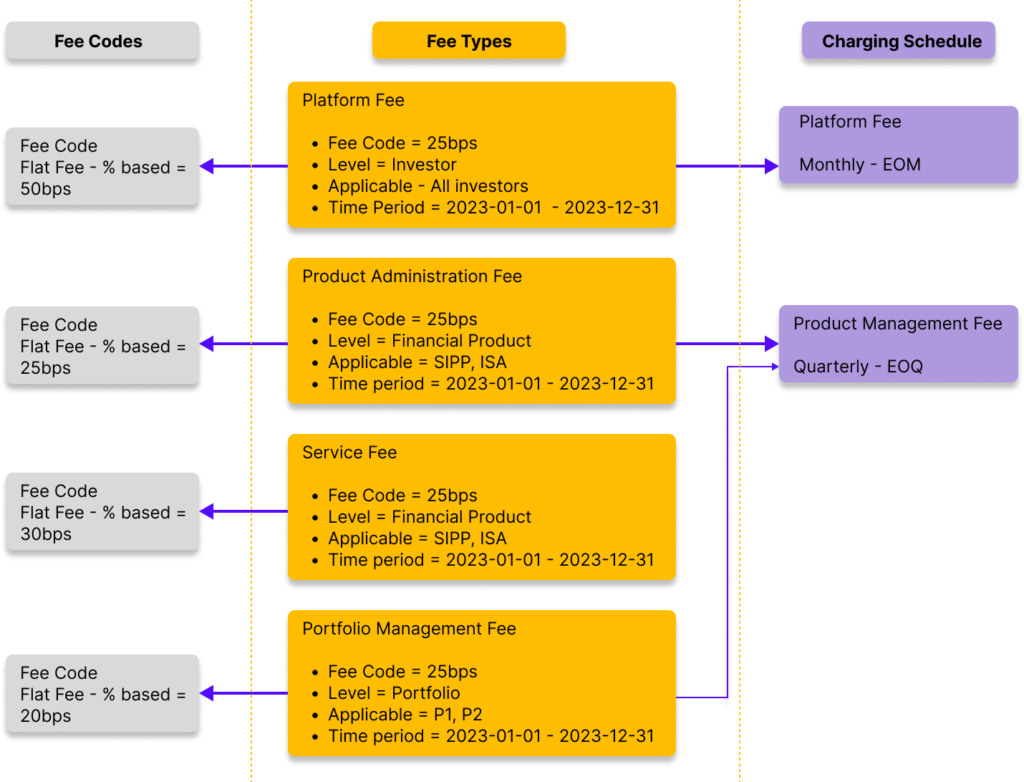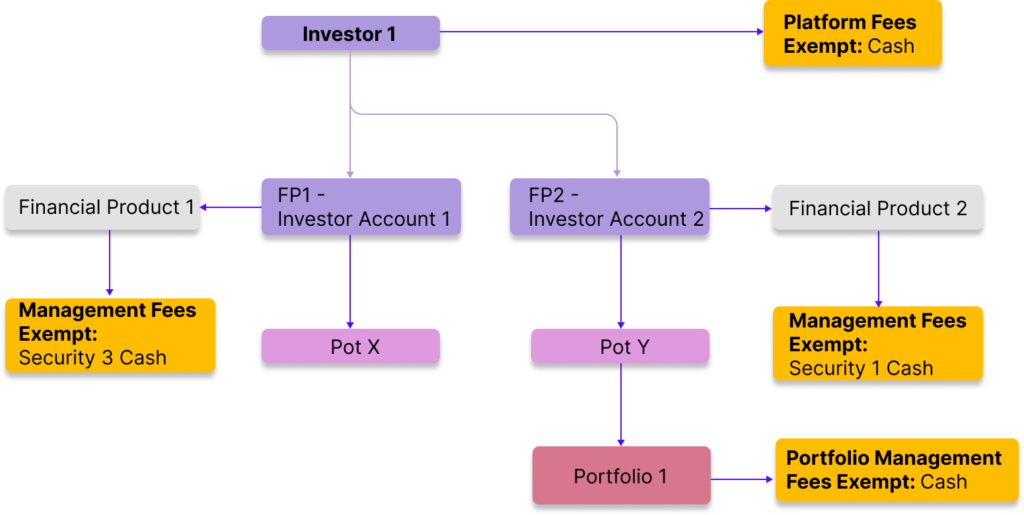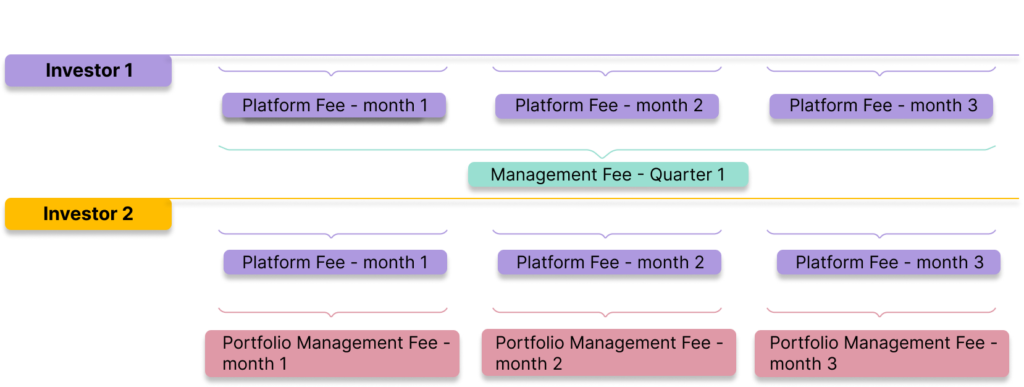By Anjana Jayawardena Posted on 30.08.2022
We put fee computation in wealth management under the microscope to understand key frictions in current systems. Senior Product Owner Anjana Jayawardena talks about the solution we devised to make revenue collection easy and seamless as a part of the latest WealthOS’ Fee Module release. To all operations users, this one’s for you. The journey begins with percentage-based fees calculated on a daily accrual basis on AUM.
Working to understand problems and limitations in the wealth management space is inbuilt into our ‘love the problem’ culture at WealthOS. Fee computation was our latest undertaking, and we identified key frictions in the way things currently work.
Firstly, operations users deal with a lot of manual work (and of course, stress) to set up a new fee structure, sometimes having to wait until the end of the current fee cycle. Executing and monitoring a fee calculation cycle may also involve manual steps.
Secondly, revenue collection for all AUM-based fees charged from members is usually complicated and tedious.
We planned to develop a fee configuration module and computation engine to take away the operational burden and free up time and resources for operations users.
How can the WealthOS Fee Module help you?
Fully configurable front-end driven fee setup for all types of fees, fee hierarchies and charge schedules.
- With a single entry, you have the flexibility to define a fee globally across all members, or all members attached to a product or portfolio. It only takes seconds to set up!
- A single entry is all you need to define exemptions per fee type to apply globally or at member, product, or portfolio level.
- You can define new fee structures for a future date or future period at any time without impacting the current fee cycles.
- You can have different charging schedules for different fees.
- If an investor wants to make the most of their savings in tax wrappers, they can nominate specific accounts/pots to deduct their fees.
Fully automated fee calculation and deduction.
- You can automate fee calculations and deductions for member accounts based on user-defined schedules for easier revenue collection.
Easy monitoring and review.
- You have traceability and transparency—with transactions being created for each fee with daily breakdowns.
- Operations users can monitor the outcome of fee calculation events.
Setting up fee rates, types and schedules with a three-step process

Step 1 – Set up your fee rates as basis points
- Define your fee codes with a basis point fee rate. You can define as many fee rates, as necessary.
Step 2 – Set up your fee type and attach it to members, financial products or portfolios.
- Select a type of fee and then attach it to a level (investor, financial product, or portfolio).
For example:
- Platform fee → investor (members)
- Product administration fee → financial product
- Portfolio management fee → portfolio
- Then define the fee applicability level (i.e., applicable to all at that level/groups/individual entities). This allows a wealth manager to attach a single fee to all members, or all members attached to a financial product or portfolio with just one entry or specific products or individuals.
For example:
- Platform fee → investors → option 1: applicable for all investors, option 2 → applicable only to investor A & investor B
- Product administration fee → financial product → option 1: applicable for all financial products, option 2 → applicable only to ISA & SIPP
- Portfolio management fee → portfolio → option 1: applicable for all portfolios, option 2 → applicable only to Portfolio P1 & Portfolio P2
- Define the fee’s time period. This allows a wealth manager to control the time period of a fee structure—create fee structures for a future quarter or a fiscal year well in advance. The time period can be open-ended or have a future end date.
Example fee structure

- Define exemptions. If you want to exclude cash or certain assets from fee calculations, you can define the exemptions for each setup.
Example fee exemption setup

Step 3 – Set up the fee deduction schedules.
- For each fee type, you can select a schedule to accrue daily fees and deduct them from an investor’s account. Each fee type can have its own deduction schedule allowing a wealth manager to charge some fees monthly and others on a quarterly, bi-annual, or annual basis.
For example
- Platform fee → monthly
- Product administration fee → quarterly
- Portfolio management fee → quarterly
Schedules

What can our fee module offer your members?
Members can nominate a pot to deduct their fees from at any time.
For example, charge fees for ISA and SIPP pots from GIA pots. This is facilitated via our REST API endpoints.

Once the configurations are set up, the WealthOS Fee engine takes care of everything else.
- Based on the schedule’s setup:
- fees will be calculated automatically for the applicable members, products, and portfolios (minus the exemptions of course!)
- transactions will be created and posted.
- cash holdings in accounts will be automatically deducted.
- Monitor the schedules and transactions posted via the WealthOS Admin UI and retrieve daily breakdowns of fees if necessary.
- Setup fees to run overnight— for 100,000 accounts, it takes less than eight hours to complete a fee calculation and deduction for AUM-based daily accrued fees with four different fee types setup (either globally or individually). You can schedule it to run overnight and review the results in the morning.
- All configurations and fees created are retrievable via our REST API GET endpoints.
Next, we will add the following features to our Fee Module:
- Absolute and marginal tiered fee structures
- VAT calculations and deductions
- Investor grouping to make fee setup even more convenient
Contact shri@wealthos.cloud if you would like to know more. We have released the Fee Module to our sandbox and it’s ready to go—try it out for free!
